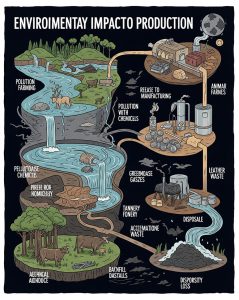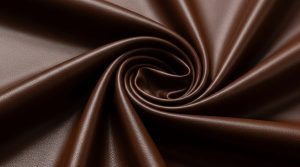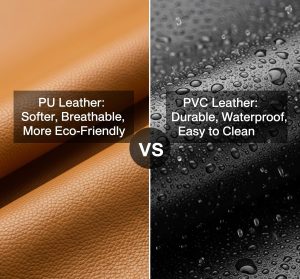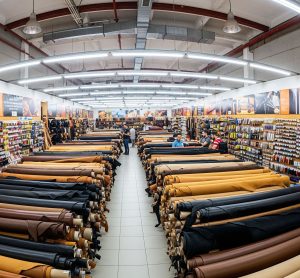Sustainability is no longer a niche concept—it's a mainstream priority. From fashion to furniture, today’s consumers are demanding products that not only perform well but also align with environmental and ethical values. As a result, materials that challenge the traditional dominance of animal leather have stepped into the spotlight. Among them, PU leather—short for polyurethane leather—stands out as a widely used and rapidly evolving option. But how sustainable is it really?
While PU leather has its critics, the future looks increasingly optimistic. With the right innovations, practices, and consumer awareness, PU leather is becoming a promising path toward balancing performance, aesthetics, and planetary responsibility.

What Is PU Leather and Why It Matters
The Sustainable Advantages of PU Leather
One of the clearest benefits of PU leather is that it eliminates the need for animal hides. Traditional leather production is deeply tied to livestock farming, which is a leading contributor to greenhouse gas emissions, deforestation, and water consumption. By using synthetic materials, PU leather offers a cruelty-free alternative that also sidesteps the heavy resource use involved in raising animals.
The environmental benefits don’t end there. Producing PU leather typically uses less water and avoids the toxic tanning chemicals found in animal leather processing—such as chromium salts and other heavy metals that pose risks to both people and ecosystems. Additionally, because PU leather is lighter and more flexible, it often requires less energy to ship and mold during manufacturing.
These features position PU leather as a more sustainable material across its production and distribution lifecycle—especially when compared to the environmental toll of conventional leather.
Addressing Concerns: A Material in Transition
Critics often point to PU leather’s plastic origins as a sustainability challenge. Because it is made from petrochemical derivatives, PU leather is not biodegradable, and lower-quality products may crack or peel over time. However, it’s important to recognize that this material is actively evolving—and the industry is embracing solutions to improve its long-term environmental performance.
For instance, a new generation of bio-based polyurethanes—derived from plant oils or recycled plastics—is beginning to replace petroleum-based polymers. This innovation helps reduce dependency on fossil fuels and lowers the material’s carbon footprint. In parallel, many manufacturers are shifting toward water-based PU coatings, which significantly reduce the release of volatile organic compounds (VOCs) during production.
Another encouraging trend is the rise of recycled PU leather, where waste PU materials are reprocessed and transformed into new products. This approach supports circularity and diverts synthetic materials from landfills.
While PU leather isn’t perfect, these advancements suggest a clear direction: the industry is committed to making the material cleaner, safer, and more sustainable.
Comparing to Animal Leather: A Broader Perspective
It’s also important to put PU leather in perspective when compared to the alternative—genuine leather. Animal leather, while durable and natural, is resource-intensive to produce. Beyond the ethical concerns, leather processing demands huge quantities of water and generates substantial chemical waste.
PU leather, particularly in its modern iterations, requires less energy, less water, and no animal cruelty, making it a compelling choice for brands and consumers who prioritize sustainability without sacrificing function or design.
Furthermore, with improvements in formulation and quality control, high-grade PU leather can now rival genuine leather in durability and lifespan—extending the product's usability and reducing overall waste.
Moving Toward a Smarter Future
Sustainability is not just about what a material is today—it's also about where it's going. PU leather is part of a larger movement to reimagine materials with a focus on ethics, efficiency, and innovation. The combination of cruelty-free production, reduced environmental impact, and broad design flexibility gives PU leather a strong foundation for growth in a responsible future.
Manufacturers are investing in cleaner production methods, designers are choosing PU leather for its versatility and message, and consumers are embracing its balance of value and conscience. With growing transparency and demand, the momentum is only accelerating.
Making Conscious Choices
For the sustainability-minded consumer, choosing PU leather is increasingly a wise and thoughtful decision. While there are still improvements to be made, it represents a move away from extractive, high-impact practices toward scalable, ethical solutions.
The key is to choose quality. Opting for well-crafted PU leather—especially products that are certified, recycled, or bio-based—ensures longer product lifespans and reduces the need for replacements. Supporting brands that prioritize eco-conscious sourcing and transparent manufacturing helps amplify this shift.
Conclusion
In the big picture, PU leather offers more than just an animal-free alternative—it’s a platform for progress. With the right investments in innovation and a shared commitment to responsible consumption, PU leather can help reshape our relationship with materials in a way that aligns with both style and sustainability.
So, is PU leather sustainable? It’s well on its way—and with optimism, innovation, and responsibility, it may be one of the most promising materials in the modern ethical toolkit.







